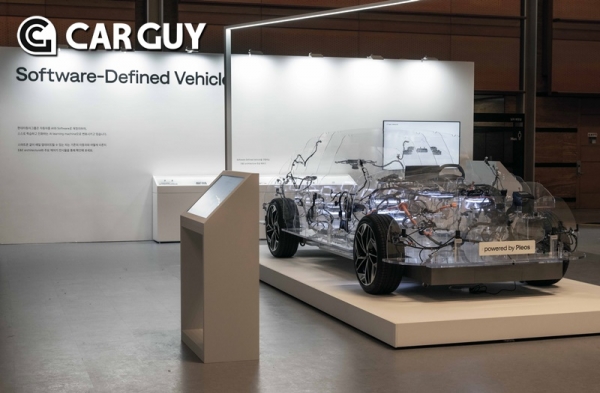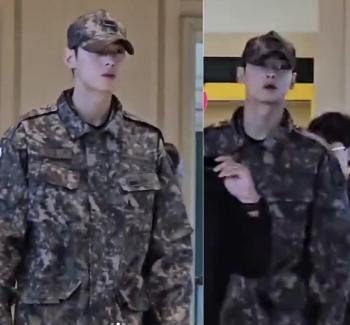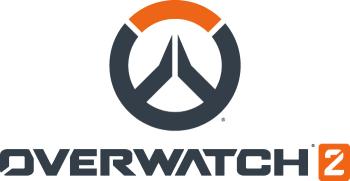Hyundai Motor Group unveils its car app ecosystem..Developer Conference 'Pleos 25'
Mar 31, 2025
|
Hyundai Motor Group invited domestic and foreign developers to hold a developer conference 'Pleos 25' at COEX in Seoul on the 28th and announced the development status of SDV (software-defined vehicle) and plans to create a next-generation infotainment system-based app ecosystem.
President Song Chang-hyun of Hyundai Motor Group's AVP division, who was a speaker on the day, officially announced Hyundai Motor Group's new mobility software brand and technology platform, "Pleos," in a key note.
Pleos is a combination of the Latin word "Pleo," which means "more," and "OS," which stands for operating system, and contains Hyundai Motor Group's vision to evolve technology and realize better movement by adding user-centered values to the movement of people and objects.
In addition, President Song Chang-hyun also unveiled the vehicle control operating system "Pleos Vehicle OS" and the next-generation infotainment system "Pleos Connect."
Pleos Vehicle OS is an operating system designed to operate the vehicle on a software basis and is a key technology that supports continuous connection and update of the vehicle based on the Electrical & Electronic (E&E) architecture.
In particular, Hyundai Motor Group integrated the controller into a high performance vehicle computer (HPVC) and a zone controller based on a structure that decoupled and decoupled hardware and software, reducing about 66% and maximizing software flexibility in the vehicle.
Pleos Connect is a next-generation infotainment system based on AAOS (Android Automotive OS), designed to enhance connectivity between mobile and vehicle so that users can naturally use apps and content they are familiar with. It also provides personalized services through the in-vehicle context-aware voice assistant 'Gleo AI'.
Hyundai Motor Group plans to apply Pleos Connect sequentially from new cars released in the second quarter of 2026, and plans to expand the application to more than 20 million vehicles by 2030.
On the same day, Hyundai Motor Group also announced a roadmap to apply Level 2+ (plus) autonomous driving by the end of 2027. We plan to continue to lighten the model on camera, radar-based recognition, and AI deep learning judgment structures, and to increase wet efficiency and continuously advance performance through vehicle-optimized neural processing units (NPUs) and large-scale learning infrastructure. Through this, we plan to develop the vehicle into a self-evolving learning machine.
Hyundai Motor Group also unveiled the "Pleos Playground," an open ecosystem where anyone can freely develop and distribute vehicle apps.
Pleos Playground is a platform that provides Hyundai Motor Group with SDK
Major global partners such as Google, Naver, Samsung Electronics, Socar, Uber, and Unity participated in the event to strengthen connectivity between mobile and vehicle and share the direction of expansion of mobile-based services through the vehicle app market.
In addition, developers who attended the site experienced Hyundai Motor Group's SDV vision by viewing E&E architecture exhibits, vehicles with Pleos Connect, and smart city control systems, and experienced beta apps and services demonstrated at the booth by major partners and developers who participated in the pre-release of the vehicle app market to confirm the possibility of expanding in-vehicle app services.
In addition, they participated in technical sessions related to Pleos Connect-based app development and practical programs to develop and distribute sample apps using Connect SDK, and shared various development experiences.
In addition, Hyundai Motor Group announced its plan to establish the "Next Urban Mobility Alliance (NUMA)" for mobility innovation at the city and country level through Pleos 25.
NUMA is an ecosystem that aims to implement an optimized mobile environment based on data connection through public-private cooperation with the aim of solving social problems such as supporting the transportation vulnerable, responding to local extinction, and the climate crisis.
As part of this, Hyundai Motor Group plans to develop urban mobility solutions in cooperation with Korean and European government agencies, focusing on DRT (Demand Responsive Transit) platform "Shuckle" and R1 (R1), a device for the weak.
President Song Chang-hyun said, "It is meaningful to share an SDV ecosystem where developers can participate directly through Pleos 25. Hyundai Motor Group is building the foundation for realizing cloud mobility such as E&E architecture and OS, UX, AI, and partnerships, and will continue to create and upgrade an open mobility ecosystem with developers, partners, and local governments."
■ New Value for Movement: Group Mobility Software Brand 'Pleos'
Pleos, unveiled by Hyundai Motor Group on the same day, is a mobility software platform that supports all mobility devices to move on their own and manage them smartly.
Pleos connects infrastructure with various means of transportation, including vehicles, to help users, businesses, and cities build a freer and more efficient travel environment.
Pleos is an end-to-end platform that integrates from high-performance chips and controllers to vehicle OS and infotainment platforms, cloud infrastructure, vehicle control and operation solutions, and mobility and logistics optimization systems.
Based on this technology platform, various functions such as connectivity, real-time data analysis, and personalized services as well as autonomous driving are harmoniously combined and provided, ultimately promoting user experience innovation and maximization of urban mobility.
■ Two key pillars for SDV: 'Pleos Vehicle OS' and 'Pleos Connect'
In order to implement the complete software-centric mobility environment that Pleos aims for, the vehicle itself must evolve into an SDV.
This is because it is limited to accumulate and utilize data in a simple hardware-oriented vehicle structure, and it is difficult to provide an environment in which applications can be developed freely using SDK and API
To solve this problem, Hyundai Motor Group is innovating the vehicle's E&E architecture and developing Pleos Vehicle OS and Pleos Connect, which can operate vehicles based on software.
Hyundai Motor Group will further advance the development of SDV technology so that the vehicle can evolve into a more efficient and flexible software platform, and furthermore, it will be up-to-date at all times through wireless software update functions.
○ Pleos Vehicle OS
The Pleos Vehicle OS is a vehicle control operating system designed to operate the vehicle on a software-driven basis. Hyundai Motor Group aims to build a vehicle software platform that adds new value to movement based on its E&E architecture, which integrates high-performance vehicle computers and controllers for each zone.
The E&E architecture is characterized by the integration of numerous individual controllers to simplify the structure of the vehicle system, and distributed processing of tasks to increase performance and stability.
It is also designed to enable continuous updates and functional expansion by applying a structure that allows hardware and software to be developed separately.
○ Pleos Connect
Pleos Connect is Hyundai Motor Group's next-generation infotainment system based on AAOS, which is characterized by being implemented according to Hyundai Motor Group's vehicle characteristics.
Hyundai Motor Group has strengthened connectivity between vehicles and mobile environments by taking full advantage of the openness and scalability of the Android development ecosystem. In particular, it is designed to ensure compatibility between vehicles and Android mobile apps so that customers can naturally experience familiar mobile experiences even in vehicles.
Pleos Connect has a UI similar to a smartphone, so anyone can use it intuitively, and a multi-window function allows users to use multiple applications simultaneously on one screen.
*Pleos Connect screen (left light version, right dark version)
※This is a version under development and may differ from the mass production version.
In addition, Hyundai Motor Group applied Gleo AI, a generative artificial intelligence based on a giant language model, to Pleos Connect to accurately recognize users' voice commands and control the vehicle.
Gleo AI handles not only simple control commands, but also complex requests such as destination setting and music playback at once, and can naturally respond to questions about various information such as weather and traffic information.
In addition, by supporting interworking with apps installed in vehicles such as navigation and calls, users can easily control apps by voice or seamlessly connect and utilize functions between apps.
Pleos Connect also provides personalized services based on 'Pleos ID'. When a user logs in with Pleos ID, he or she can enjoy a consistent user experience based on profile information associated with his or her settings, regardless of the type of vehicle or vehicle.
■ Open Vehicle App Development Environment for Anyone to Participate: 'Pleos Playground'
Hyundai Motor Group unveiled "Pleos Playground," a new software development environment for vehicles, at Pleos 25 and announced its vision to create an open ecosystem where mobile app developers can easily develop applications for vehicles.
Pleos Playground is a platform that integrates and provides various tools and information necessary for software development for automobiles, and developers can freely develop apps and services by utilizing software development information connected to vehicles, clouds, and mobile environments.
In particular, basic development tools provided by AAOS, as well as SDKs, design guides, API documents, and sample codes, including Pleos' own extensions and services, can be provided to develop vehicle applications more efficiently.
In addition, Hyundai Motor Group will also operate an app market where anyone can distribute apps developed to vehicles.
Developers can register and distribute apps directly in the app market, and users can download and update vehicle apps in Pleos Connect's app market just as they install apps on their smartphones.
These automotive app ecosystems are expected to provide new opportunities and value for both developers and users.
Developers can quickly enter the market and generate profits through a direct distribution channel called the app market by developing apps that address users' needs even if they do not participate in car development. In addition to the functions provided when purchasing a vehicle, the user will experience receiving various apps and services directly from the developer.
Above all, Hyundai Motor Group created this environment to create an ecosystem that can flexibly meet various customer needs with external developers.
Information for hardware development as well as software development is provided by Pleos Playground. Hyundai Motor Group will provide Plug & Play functions so that various accessories, such as clusters or button bars, can be connected to the vehicle without a separate setting, and will provide standard interfaces or SDKs needed to help anyone develop accessories.
■ 'Next Urban Mobility Alliance' for Cloud-Based Mobility Vision
Hyundai Motor Group announced its next-generation urban transportation council, NUMA, at Pleos 25 and announced that it will resolve transportation and movement problems through public-private cooperation.
NUMA aims to come up with practical solutions to urban social problems such as supporting the mobility disadvantaged, responding to local extinction, and climate change, and furthermore, to implement a future mobility environment in which all movements are connected and automated.
NUMA aims for a cooperative system in which research, demonstration, and policy proposals are organically linked based on the expertise of participating organizations, thereby simultaneously promoting mobility innovation and creation of new industrial opportunities.
As part of NUMA, Hyundai Motor Group is working with ▲ local governments to operate a demand-response transportation platform and shuckle to solve movement problems in areas underprivileged. ▲In addition, 'R1' and 'Nano Mobility', which are linked to shuckles for the weak, are increasing the mobility of the physically weak in areas where access to vehicles is difficult. ▲We are working with government agencies in Korea and Europe to demonstrate various urban problems.
In addition, Hyundai Motor Group is working with major related companies to advance the era of autonomous driving, and supports various global partners to enter the market based on the development of autonomous vehicles and mass production capabilities.
As a representative example, it is promoting an autonomous vehicle foundry business that supplies electric vehicles with autonomous driving technology to global autonomous driving companies. In this process, Hyundai Motor Group supports all areas of the autonomous driving ecosystem, including development kits, fleet management, production, certification, and technical support.
As an extension of that, Noah Zych, general manager of Uber's self-driving mobility and delivery division, announced a plan to expand robo-taxi services based on cooperation with Hyundai Motor Group and a plan to promote global joint projects, expressing his willingness to strengthen partnerships to spread autonomous driving technologies.
In addition, Hyundai Motor Group is also actively promoting efforts to expand its automotive app ecosystem with major global companies through NUMA.
Global partners who participated in the Pleos 25 announced the direction of cooperation with Hyundai Motor Group and shared plans to further strengthen the connectivity between vehicles and mobile devices based on data.
Chung Jae-yeon, vice president of Samsung Electronics' SmartThings team, announced that Hyundai Motor Group's SDV vehicles, smart homes, and mobile devices will be connected to one ecosystem and AI Home-based customized experiences will be extended to vehicles. In particular, it plans to provide more convenient daily experiences by strengthening the linkage between vehicles and Galaxy smartphones through SmartThings Find service.
Denis Nikliudov, Google's Android Automotive Engineering Officer, presented various technical scenarios for enhancing the in-vehicle user experience through the link between AAOS-based SDV vehicles and Google services. In addition, he said, "We will expand cooperation with Hyundai Motor Group on AI-based next-generation navigation and infotainment technology."
Lee Jae-hoo, head of Naver App, announced a plan to optimize AI, search, map, and content services in the SDV environment. It said it plans to provide personalized services such as voice search, AI briefings, and destination recommendations that understand users and naturally connect experiences between mobile and vehicle by applying in-vehicle AI.
CEO Park Jae-wook of Socar suggested ways to increase the convenience of car-sharing services by linking car data with Hyundai Motor Group's SDV open platform. In the future, Socar plans to provide ultra-personalized functions such as opening doors, cooling and heating settings, safety diagnosis, and automatic seat setting based on API, and to implement customized services optimized for the purpose of use through linking cloud and vehicle user profiles.
Tatsuya Matsubara, general manager of the Asia-Pacific automotive division of Unity, announced a cooperative model between the Pleos open ecosystem and Unity platform, presenting the expansion of the in-vehicle game and content experience and the application of real-time 3D engines in the SDV environment. This simplifies the production and distribution of in-vehicle games and content on the Unity platform, and provides customized in-car entertainment and real-time 3D-based infotainment experiences through flexible interworking with hardware, it said.
■ SDV Exhibition and Experience Space to experience Pleos technology and future mobility firsthand
At Pleos 25, various exhibitions and participatory programs were operated so that participants could directly experience and understand SDV technology and the ecosystem of vehicle apps.
In the 'SDV Zone', E&E architecture exhibits where you can experience SDV's core technologies and innovative user experiences, as well as next-generation infotainment systems and SDV testbed vehicles were displayed.
Participants boarded an SDV testbed vehicle and experienced firsthand the key functions of Pleos Connect, including seat-specific voice recognition, voice command vehicle control, and in-car games, confirming the possibility of a software-driven vehicle.
Hyundai Motor Group plans to install the newly introduced AAOS-based next-generation infotainment system on its new vehicle released in 2026, improving its functions every year and providing customers with an ever-improving vehicle experience.
The "Pleos Connect Apps Zone" introduced various vehicle applications and services developed by 26 developers who participated in the pre-release of Hyundai Motor Group's vehicle app market.
Visitors visited each partner's booth to experience the app, share feedback with developers and officials, and pay attention to the scalability of the vehicle app ecosystem.
The "Cloud Mobility Zone" is a space that implements a mobile ecosystem in which mobility devices, services, and infrastructure are connected by a single platform, and is a space where you can actually experience Hyundai Motor Group's software mobility vision.
FMS (Fleet Management System) and DRT vehicles are displayed in this space, and control and analysis systems and AI-based solutions operated based on real-time vehicle data are visually implemented through large control screens.
Through the exhibition, visitors were able to see technologies and systems for automating and optimizing urban transportation at a glance, and through the process of checking actual data, they were also able to widely understand linked solutions, including transportation management systems (TMS).
A total of 24 technology presentations were held under the theme of SDV development and vehicle data utilization at a separate track session.
Developers who were speakers shared next-generation infotainment app development, software technology for SDV implementation, mobility solutions and service cases, and provided participants with specific insights on SDV development.
In the practice session, developers made sample apps using Pleos Connect SDK, API, and mobile SDK, and even distributed them in conjunction with vehicles.
One participant experienced the actual vehicle application being implemented and said "The concept of a vehicle app was unfamiliar at first, but when I developed it myself, I felt it had as much potential as a mobile app."
Various development tools such as SDKs and data released on the same day can be found on the Pleos Playground website. (링크:https://pleos.ai/playground)
Meanwhile, Hyundai Motor announced its mid- to long-term software-defined everything (SDx) strategy at the International Consumer Electronics Show in January last year, declaring a shift to a software-oriented development system.
Hyundai Motor Group plans to automate, automate, and constantly connect all mobile solutions and services through SDx so that anyone can enjoy the freedom of movement universally.
This article was translated by Naver AI translator.














